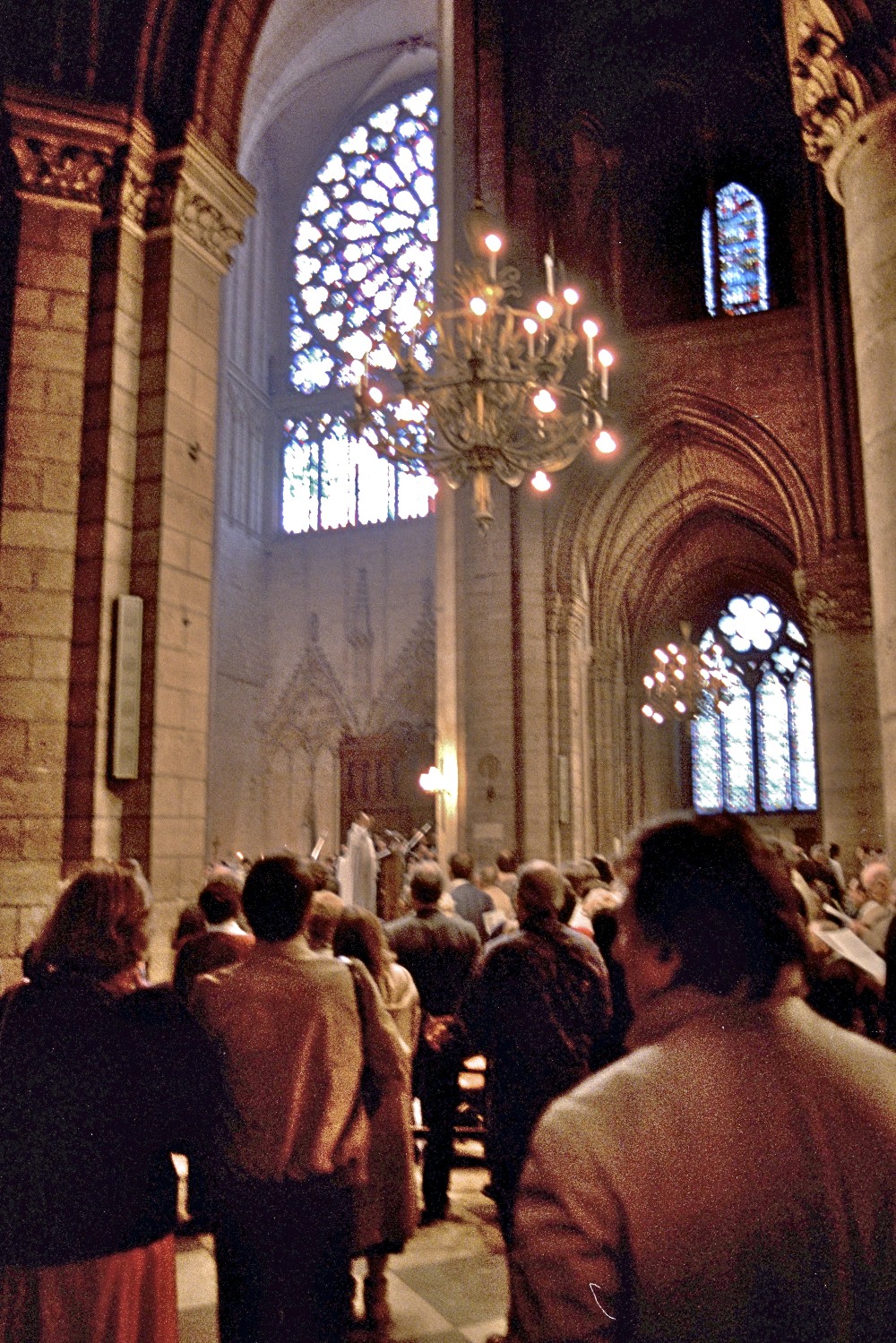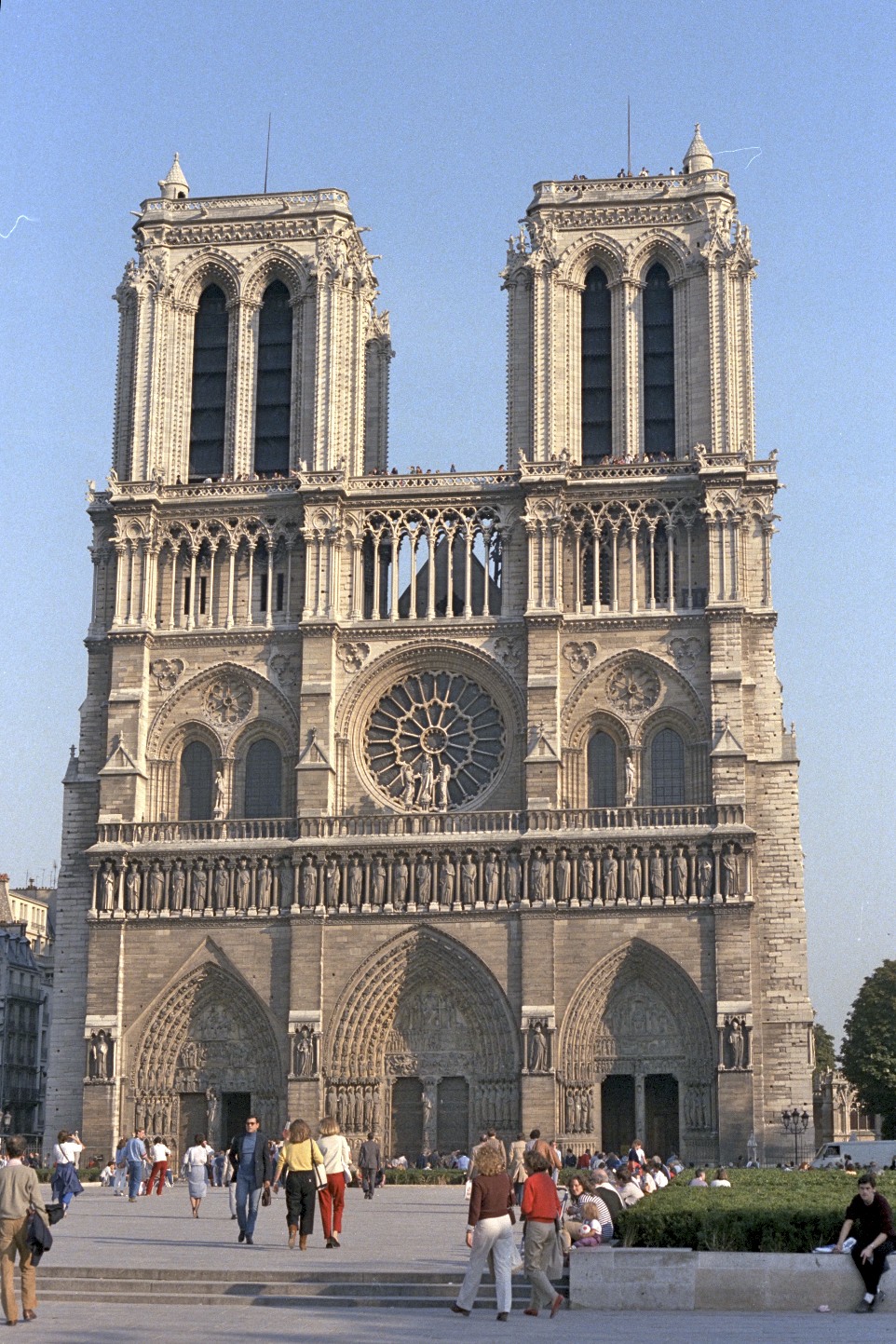Notre-Dame
We cross the garden behind Notre-Dame and at its backboard side. From this side we have the closest view of the cathedral.
We see clearly the extensive system of flying buttresses supporting the walls. They are one of the main characteristics of Gothic churches. We also see the front of the transept with an enormous rose window, also spires and dragons, all typically Gothic.
When we come to the west front of the church it rises in all its majesty, with magnificent pointed arches over the portals, a row of kings’ statues, a rose window of nine meters in diameter and finally two massive and spireless towers which reach 70 meters in height.
The biggest bell in the south tower weighs 13 tons and its clapper half a ton. Travellers who want to enjoy the view from the tower can take the stairs.
Notre Dame interior
We enter the Notre Dame.

It can take 9000 worshippers at the same time. It has a crucifix plan with very short transepts. It is 31 meters high on the inside, with lon
g, Gothic windows. It is completely surrounded by chapels nestling between the buttresses. In the transept there is a rose window on each side. An enormous chancel with an altar and an ambulatory is in the far end.
Notre-Dame is an historical landmark of architecture, a show-piece of the early Gothic. It was built in 1163-1345. All the time the original plans were faithfully used. Therefore, it has a consistent style and became the model for French cathedrals. Thus, it was dominant in spreading the Gothic style all over France and also had influence on similar cathedrals in Britain.
Today most of church is original, including the glass in the rose window on the west front. And what has been renovated has been done in the original style. The church itself and the square in front of it have for eight centuries been the focal point of Paris and France.


